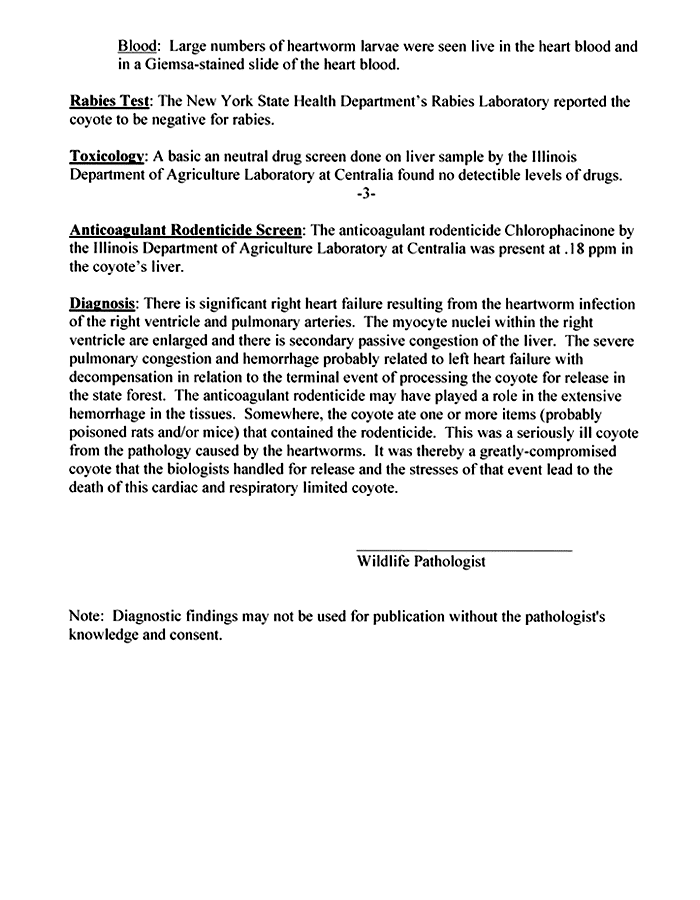What Killed Hal
Necropsy: Central Park coyote 'seriously ill' with heartworms
APRIL 7--A necropsy on Hal the coyote has concluded that several factors--including heartworm infection and internal bleeding caused by his ingestion of rodent poison--contributed to the death of the former Central Park resident. A New York State Department of Environmental Conservation statement also notes that the animal's preexisting poor health 'coupled with the stress of captivity and handling during the release' resulted in Hal's demise. A report on the necropsy by DEC's Dr. Ward Stone, a wildlife pathologist, can be found below. Hal, who made headlines last month when he was discovered living in Manhattan, died March 30 as he was being prepared for release into a forest north of New York City. Stone's report, which refers to Hal as a 'greatly-compromised coyote,' notes that, as the one-year-old was readied for repatriation, he was 'taken from his carrier and held with a catch-pole and the mouth was held shut with an ace bandage wrapped around his snout.' While Hal's 'nose was clear for breathing,' a few minutes into the procedure, 'the coyote stopped breathing. This was during ear-tagging. Resuscitation attempts failed.' (3 pages)








